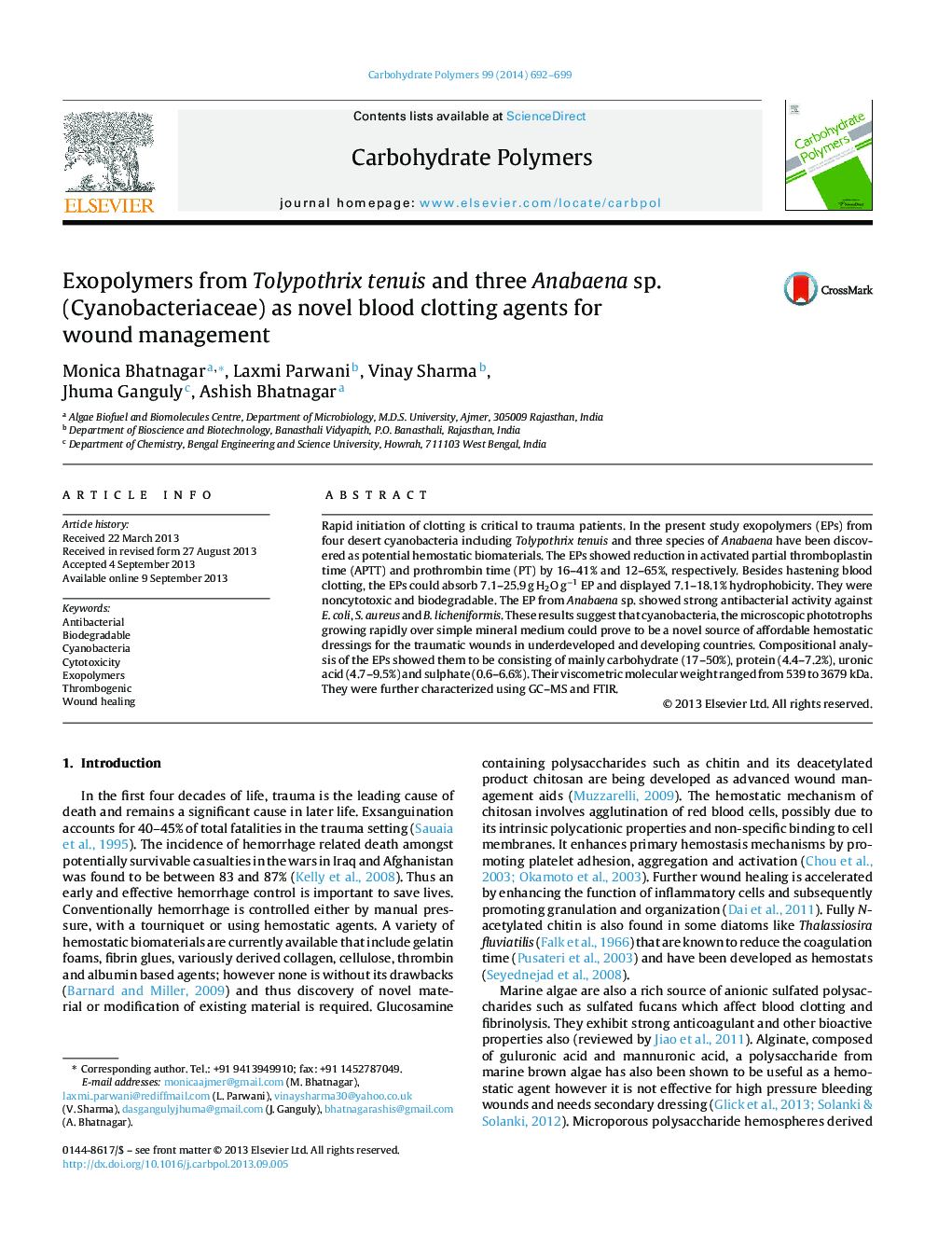| Article ID | Journal | Published Year | Pages | File Type |
|---|---|---|---|---|
| 7793587 | Carbohydrate Polymers | 2014 | 8 Pages |
Abstract
Rapid initiation of clotting is critical to trauma patients. In the present study exopolymers (EPs) from four desert cyanobacteria including Tolypothrix tenuis and three species of Anabaena have been discovered as potential hemostatic biomaterials. The EPs showed reduction in activated partial thromboplastin time (APTT) and prothrombin time (PT) by 16-41% and 12-65%, respectively. Besides hastening blood clotting, the EPs could absorb 7.1-25.9 g H2O gâ1 EP and displayed 7.1-18.1% hydrophobicity. They were noncytotoxic and biodegradable. The EP from Anabaena sp. showed strong antibacterial activity against E. coli, S. aureus and B. licheniformis. These results suggest that cyanobacteria, the microscopic phototrophs growing rapidly over simple mineral medium could prove to be a novel source of affordable hemostatic dressings for the traumatic wounds in underdeveloped and developing countries. Compositional analysis of the EPs showed them to be consisting of mainly carbohydrate (17-50%), protein (4.4-7.2%), uronic acid (4.7-9.5%) and sulphate (0.6-6.6%). Their viscometric molecular weight ranged from 539 to 3679 kDa. They were further characterized using GC-MS and FTIR.
Related Topics
Physical Sciences and Engineering
Chemistry
Organic Chemistry
Authors
Monica Bhatnagar, Laxmi Parwani, Vinay Sharma, Jhuma Ganguly, Ashish Bhatnagar,
